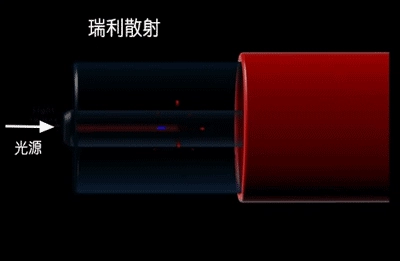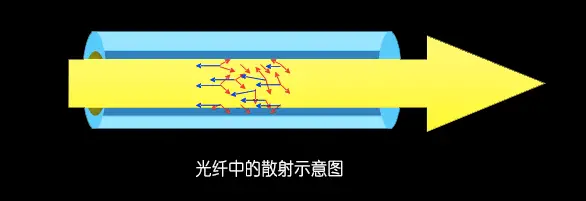
Blog
blog Location: Home > Blog > Technical Article
Location: Home > Blog > Technical Article
 Update Time:2025-08-14
Update Time:2025-08-14 Traffic:
Traffic: 3. Absorption loss of materials
The material used to make optical fibers can absorb light energy. After the particles in the optical fiber absorb light energy, they vibrate and generate heat, which dissipates the energy, thus generating absorption loss. We know that matter is composed of atoms and molecules, and atoms are composed of atomic nuclei and extranuclear electrons. Electrons revolve around atomic nuclei in certain orbits. This is just like the Earth we live on and planets such as Venus and Mars revolve around the sun. Each electron has a certain amount of energy and is in a certain orbit, or in other words, each orbit has a certain energy level.
The orbital energy level closer to the nucleus is lower, and the orbital energy level farther from the nucleus is higher. The size of the energy level difference between orbits is called the energy level difference. When an electron jumps from a low energy level to a high energy level, it absorbs the energy of the corresponding energy level difference.
In an optical fiber, when an electron at a certain energy level is irradiated by light of a wavelength corresponding to the energy level difference, the electron in the low-energy orbit will jump to the orbit with a higher energy level. This electron absorbs the light energy, resulting in light absorption loss.
Silicon dioxide (SiO2), the basic material for making optical fibers, absorbs light itself, one is called ultraviolet absorption and the other is called infrared absorption. Currently, optical fiber communications generally only work in the 0.8-1.6μm wavelength range, so we only discuss the loss in this working range.
The absorption peak generated by electron transition in quartz glass is around 0.1-0.2μm wavelength in the ultraviolet region. As the wavelength increases, its absorption effect gradually decreases, but the affected area is very wide, up to wavelengths above 1μm. However, ultraviolet absorption has little effect on quartz optical fibers working in the infrared region. For example, in the visible light region with a wavelength of 0.6μm, ultraviolet absorption can reach 1dB/km, and at a wavelength of 0.8μm, it drops to 0.2-0.3dB/km, and at a wavelength of 1.2μm, it is only about 0.1dB/km.
The infrared absorption loss of quartz optical fiber is caused by the molecular vibration of the material in the infrared region. There are several vibration absorption peaks in the band above 2μm.
Due to the influence of various doping elements in the optical fiber, it is impossible for quartz optical fiber to have a low-loss window in the band above 2μm, and the theoretical limit loss at a wavelength of 1.85μm is 1dB/km.
Through research, it was also found that there are some "destructive elements" in quartz glass, mainly some harmful transition metal impurities, such as copper, iron, chromium, manganese, etc. These "bad guys" greedily absorb light energy under light irradiation, jump around, and cause light energy loss. Removing the "troublemakers" and chemically purifying the materials used to make optical fibers can greatly reduce the loss.
Another absorption source in quartz optical fiber is hydroxyl (OHˉ). According to the research, people found that hydroxyl has three absorption peaks in the optical fiber working band, which are 0.95μm, 1.24μm and 1.38μm. The absorption loss at 1.38μm is the most serious and has the greatest impact on the optical fiber. At 1.38μm, the absorption peak loss caused by hydroxyl with a content of only 0.0001 is as high as 33dB/km.
Where do these hydroxyls come from? There are many sources of hydroxyls. First, there is water and hydroxyls in the materials used to make optical fibers. These hydroxyls are not easy to be removed during the purification of raw materials, and finally remain in the optical fibers in the form of hydroxyls. Second, there is a small amount of water in the hydroxyls used to make optical fibers. Third, water is generated by chemical reactions during the manufacturing process of optical fibers. Fourth, water vapor is brought in by the entry of outside air. However, the current manufacturing process has developed to a fairly high level, and the content of hydroxyls has dropped to a sufficiently low level, and its impact on optical fibers can be ignored.
4. Scattering loss
In the dark night, if you shine a flashlight into the sky, you can see a beam of light. People have also seen thick beams of light from searchlights in the night sky.
So why do we see these beams of light? This is because there are many tiny particles such as smoke and dust floating in the atmosphere. When light shines on these particles, it is scattered and emitted in all directions. This phenomenon was first discovered by Rayleigh, so people named this scattering "Rayleigh scattering".

How does scattering occur? It turns out that the tiny particles such as molecules, atoms, and electrons that make up matter vibrate at certain inherent frequencies and can release light with a wavelength corresponding to the vibration frequency. The vibration frequency of a particle is determined by the size of the particle. The larger the particle, the lower the vibration frequency and the longer the wavelength of the light released; the smaller the particle, the higher the vibration frequency and the shorter the wavelength of the light released. This vibration frequency is called the inherent vibration frequency of the particle. However, this vibration does not occur on its own, it requires a certain amount of energy. Once a particle is irradiated with light of a certain wavelength, and the frequency of the irradiating light is the same as the inherent vibration frequency of the particle, it will cause resonance. The electrons in the particle will begin to vibrate at this vibration frequency, resulting in the particle scattering light in all directions, the energy of the incident light is absorbed and converted into the energy of the particle, and the particle re-emits the energy in the form of light energy. Therefore, for an outside observer, it seems that the light hits the particle and then scatters in all directions.
There is also Rayleigh scattering in the optical fiber, and the light loss caused by it is called Rayleigh scattering loss. In view of the current level of optical fiber manufacturing technology, it can be said that Rayleigh scattering loss is unavoidable. However, since the size of Rayleigh scattering loss is inversely proportional to the fourth power of the wavelength of light, the impact of Rayleigh scattering loss can be greatly reduced when the optical fiber works in the long wavelength region.

5. Congenital deficiency, no one can help
The optical fiber structure is imperfect, such as bubbles, impurities, or uneven thickness in the optical fiber, especially the uneven core-cladding interface. When the light reaches these places, part of the light will be scattered in all directions, causing loss. This loss can be overcome by improving the optical fiber manufacturing process. Scattering causes light to be emitted in all directions, and part of the scattered light is reflected back in the opposite direction of the optical fiber propagation. This part of the scattered light can be received at the incident end of the optical fiber. The scattering of light causes part of the light energy to be lost, which is undesirable. However, this phenomenon can also be used by us, because if we analyze the strength of the received part of the light at the transmitting end, we can check the breakpoints, defects and loss of this optical fiber. In this way, through human ingenuity, bad things can be turned into good things.
